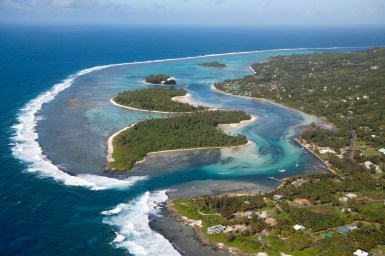Pacific Islands

The future of earth observations for Pacific Island nations
Satellites are transforming the way we see – and map – the Earth. That's especially the case in the Pacific where islands nations can benefit from satellite services – Earth Observations (EO) – to understand and manage the environment.

Knowledge, networks, politics: An island maps a better future
A PNG–Australian initiative to bring decision-makers together and give local communities a stronger voice in determining a sustainable future for their land and natural resources is bringing early results.

One ocean: A sustainable marine environment for healthy lives
The amount of ocean-derived protein consumed in countries in the Pacific Ocean is higher than in any other part of the world. Providing the best science to inform sustainable management of that resource is vital.

Mapping the seafloor of one of the world’s largest marine parks
The Coral Sea Marine Park is one of the world’s largest marine parks and vital to surrounding Pacific Island countries. A month-long voyage by Australia's research vessel to gather and share data and insights with international colleagues has begun, in pursuit of a better understanding of the area's geodynamic and climatic history, as well as biotic evolution.

Pacific faces crop yield declines, turns to past for modern solution
Climate change takes many headlines for threatening the Pacific. However, to secure the region’s shared food culture, soil scientists are working with Pacific farmers to provide precision agriculture tools that could herald a new era in regional farming.

Pacific partnerships blaze a trail for climate adaptation
Local knowledge and trusted, collaborative relationships with key stakeholders is helping researchers deliver the science that will enable Pacific nations communities to further build climate resilience.

Iconic New Caledonian birds join the research collection
The Australian National Wildlife Collection holds a significant collection of fauna and flora of New Guinea and the Pacific islands, critical to understanding the evolution of species in Australia and the wider Pacific. The Collection now includes bird specimens from New Caledonia, including the iconic Kagu.

Island nation leads the way in climate resilience
Salamo Fulivai reads the nightly news in Tonga but when Tropical Cylcone Gita arrived it was more than a story. Fortunately, forewarned is forearmed. Just months earlier Salamo had been part of climate change adaptation and disaster risk reduction training.

Where science and nations united over oceans
Our ‘blue planet’ is made up of one continuous ocean, not five separate oceans. The first UN Ocean Conference broke down barriers between developed and developing nations, science and government, government and the private sector, and corporate and community interests. Here's a ringside insight into what it all means.
